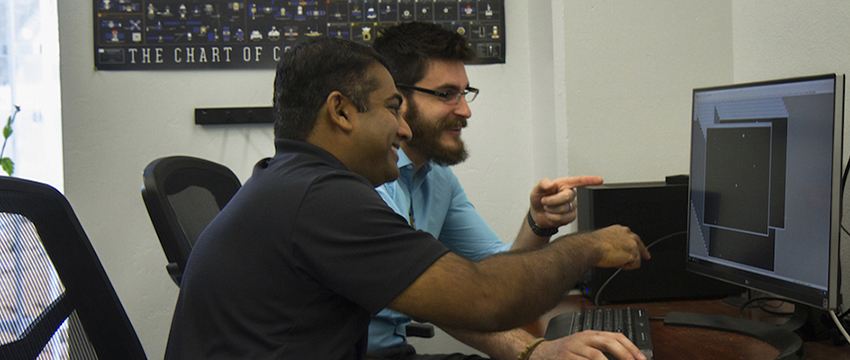
By Emily Litvack - March 22, 2018
A defunct Chinese space station, Tiangong-1, is expected to fall to Earth any day now – on March 31, give or take a few days. When it does, it'll be the largest manmade object to re-enter Earth's atmosphere in a decade.
As the day draws near, Vishnu Reddy, University of Arizona assistant professor of planetary sciences, and Tanner Campbell, an aerospace and mechanical engineering graduate student, are tracking its reentry using a $1,500 optical sensor they built in four months.
Tiangong-1 Zooms through Low Earth Orbit
Launched in 2011, Tiangong-1 served as a laboratory for three manned missions and was initially intended to deorbit in 2013. Now as it tumbles, seemingly uncontrollably, through space, researchers across the globe are scrambling to predict when and where it’ll come back down.
Tiangong-1 occupies low Earth orbit, or LEO. LEO is relatively close to Earth's surface compared to other orbits, such as medium Earth orbit and geostationary orbit, a faraway space here communication satellites reside.
For many reasons, it's harder to track and predict the path of objects in LEO than their more distant counterparts, because "objects are moving really fast," Reddy says. At 17,400 mph, Tiangong-1 orbits the Earth every 90 minutes.
On top of that, objects in LEO are up against something called "drag" when they get closer to the Earth – the faster an object travels, the harder it is for it to move through air. In the same way a hand held outside the window of a car going 70 mph is harder to control than one outside of a car going 20 mph, the same goes for Tiangong-1 as it re-enters Earth's atmosphere. Drag makes prediction harder.
Because of the harshness of LEO's environment, no spacecraft stays there forever; Tiangong-1's seven-year flight isn't unusually short.
Tracking Objects in LEO
As of now, researchers primarily track and predict paths of objects in LEO using ground-based radar systems that detect and catalog objects.
It's an extremely expensive operation available only to a select handful of countries whose militaries can afford it. The United States Air Force is one of them, with its highly sophisticated Space Fence.
"Tracking objects with radar is a very expensive exercise," Reddy says.
When the news of Tiangong-1's re-entry to Earth hit the stands, Reddy saw an opportunity to try tracking it with something less sophisticated, and less expensive. He wondered, "From the UA, can we do something meaningful to contribute to our national security interests?"
He and Campbell spent four months designing and building the $1,500 hardware and software optical sensor system to test that very question. They've been collecting data on Tiangong-1's whereabouts for several weeks.
"Over the past few weeks, it's been losing altitude rapidly," Campbell says. As of March 21, it's at an altitude of roughly 136 miles.
As Reddy and Campbell have collected and studied their data, they've been comparing it to orbit data that the Air Force has been publishing daily, gathered using radar.
"Obviously we're not going to be able to get as accurate and precise data as they can get, but we are trying to see what we can get and how closely our derived products match," Campbell says. "A system like ours is a lot more accessible to academia who can also contribute."
"It's giving an opportunity for our students to play a role in space situational awareness," says Reddy.
Taking the Results to the Real World
Reddy and Campbell explain that, for now, they're simply putting their optical sensor system to the test and seeing what it's capable of – a test for which Tiangong-1 is the perfect subject.
"Radar has advantages and disadvantages, as does optical," Reddy says. "If we've come up with something that's even half as good as radar but can be done at a tenth of the cost, there might be some problems we can solve this way."
Reddy uses the example of placing one of these systems at every fire station in the United States. Whereas radar must be manned and operated, the optical sensors can run autonomously and can effectively crowdsource similar data.
"Exactly," Campbell says. "We're not trying to replace radar, but it’s a complement."
Reddy and Campbell are now placing an array of these sensors on a single mount to be installed at Biosphere 2 – all for the purpose of tracking objects in LEO.
"Basically, we're trying to develop methods that are cost-effective for the taxpayer, train the next generation of scientists and engineers like Tanner, and show the world that we can be better stewards of our precious orbital space," says Reddy.
Campbell plans to present the results of their work tracking Tiangong-1 at the Advanced Maui Optical and Space Surveillance Technologies Conference this fall.

